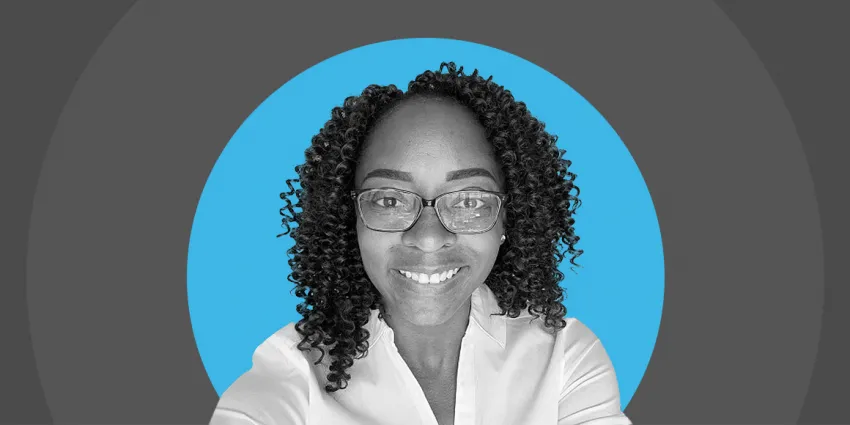



This article is part of a series about MOBE Guides and the work they do.
Name: Tonnisha
Before MOBE: Certified health and wellness coach for 11 years at a major health care system
Years at MOBE: 3
With the expert support from MOBE Guides, individuals can achieve their health and well-being goals.
In my role as a MOBE Guide, I help participants create space to focus on their well-being. When employee well-being increases, work satisfaction increases, too. It’s a win for health plans, employers, and individuals.
We make work-life balance a reality.
When people talk about work-life balance, they’re usually concerned about working too much and not having enough time for themselves. It can feel like a hopeless position. However, the root of the problem is that people often struggle to distinguish between their work and personal roles. Instead, they combine everything into one identity—where the lines between work and personal are blurred.
I help participants get a good understanding of what they want from their personal life and—separately—what they want from their professional life. It’s only when we split work and personal priorities that participants find the path to the work-life balance people crave. It’s the act of splitting the two roles that leads people to equilibrium and harmony.
We find ways to integrate well-being into daily activities.
Guides often suggest easy ways to incorporate well-being into daily activities. For example, people spend a lot of their lives at work. Most people know that working 10 hours a day, sitting at a desk, is a health risk. But a MOBE Guide can help a participant see opportunities for improvement from a different angle. For example, I might ask a participant: How often are you standing up? Do you realize when you haven't gone to the bathroom in a few hours? When was the last time you filled up your water bottle?
People do their best work when they practice healthy habits. At work that might mean having a hard stop at the end of the day or taking a lunch break instead of working through it. Or getting a standing desk, walking to a bathroom further from your desk to get more steps, or bringing your gym bag to work so you don’t skip your workout. These small changes can make a big impact.
People might be able to reduce medications or start using fewer physical therapy services, because they’re moving their bodies more. They start recognizing when it's time to move their bodies more instead of waiting until being told. The effect grows and grows.
We help people avoid and overcome burnout.
Avoiding (or overcoming) burnout starts by helping participants get in tune with themselves. When they feel burned out, we encourage them to ask questions such as, “What do I need in this moment?” or “Why am I so frustrated with this assignment?” When people don't stop to answer those nagging questions, they just keep going and going and going—until they burn out. I often tell participants, “Machines break down and they're built to last, right? What about your health, your “machine?” If you break down, what will happen to you? What do you think will happen if you continue at this pace and don’t change?”
Asking these questions prompts participants to realize that they really need to do something different. They see that they’re heading in a direction where their job isn’t a passion or vocation anymore. It’s just what pays the bills. We work with participants to realize that if they want a change, they have to make a change. From there, we’ll set tangible action steps that may lead to solutions that eliminate barriers.
Our work leads to changes in the whole health care ecosystem.
When participants work with a well-being offering like MOBE, everyone benefits. Individuals get the help they need. Health plans and employers see better outcomes and see a strong correlation to driving healthcare costs down. And, when one person has a good experience with a well-being program, they tell others. Now five people try it, followed by 10, and 30. Those ripples of change are far-reaching.
Most importantly, we impact people’s lives.
Improving and impacting people's lives is where I get the satisfaction from doing this work. I explain to my participants that it’s my goal for them to need me less. And, eventually, we get to the spot where the participant says, “Look, mom, no hands!” They are able to ride and steer on their own and everything feels great.
I learned at a very young age, if you're doing something that you love, you never work a day in your life. Helping somebody turn on the light to what's already been there all along is the icing on the cake. I get to have this cake every day and it’s amazing.